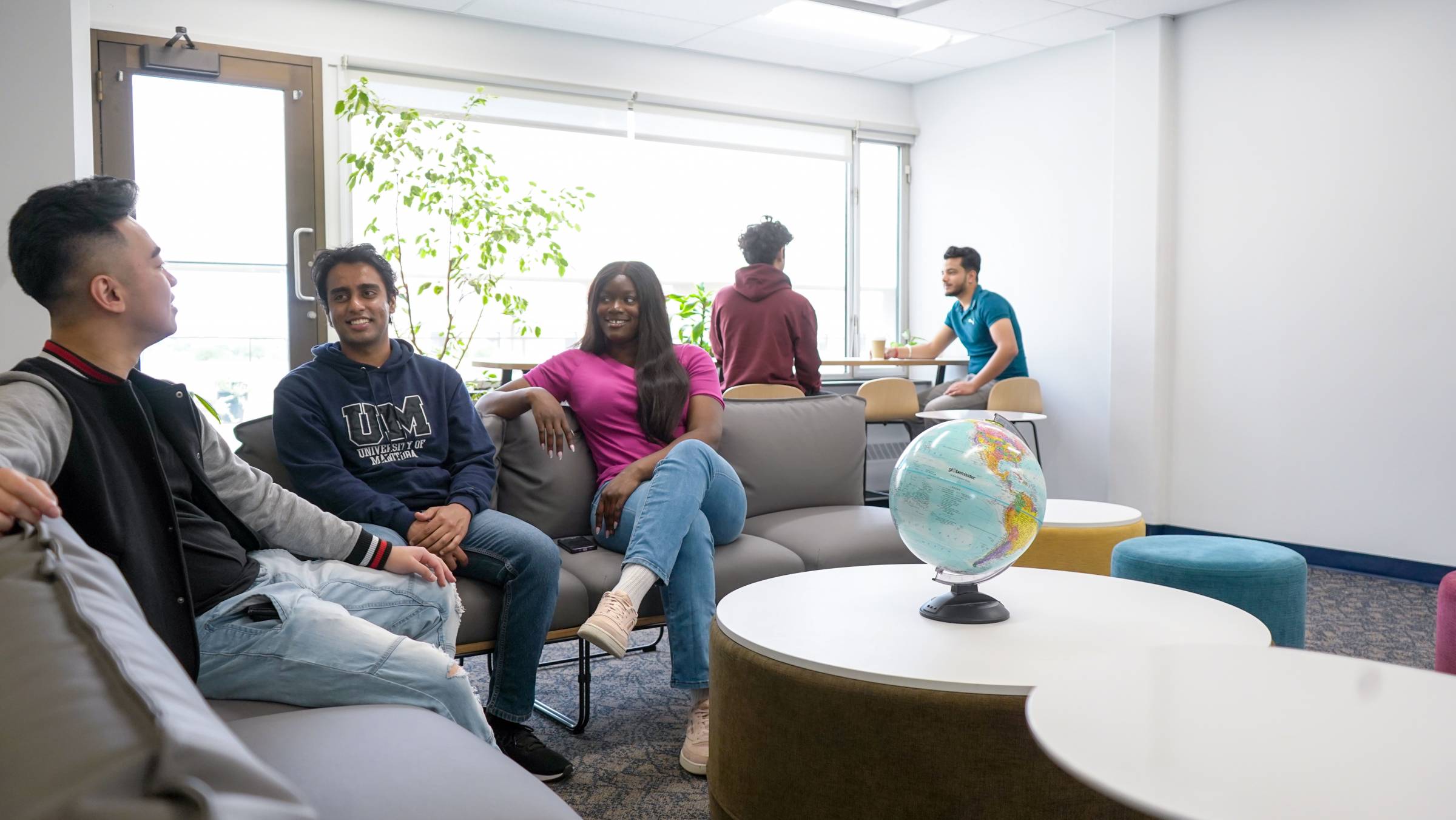
Connecting theory and experience: Asper student explores Indigenous community-based learning in Belize
Elliot Thordarson was one of ten students who took part in the “Belize: Maya Wellness” program this February. For a week, they travelled to Belize in Central America and stayed with Indigenous communities in Dangriga and Laguna. Facilitated by the Community Engaged Learning office and the International Centre at the University of Manitoba, this program was created to connect Indigenous students here at UM with Indigenous communities abroad. As Thordarson explains it, “We went there as Indigenous people to live with other Indigenous people from the tail end of Turtle Island and learn about how they live day-to day and about, specifically, the land-based foodways.”
Between the International Centre coordinating funding and Community Engaged Learning helping them prepare as a team, the group of students was ready to take on the week. Regular sessions leading up to their departure helped this group of students – all from different cohorts across the university – prepare socially through icebreakers and team building. Thordarson recalls how Meghan Young, head of the Community Engaged Learning team, set them up for success, guiding them through the purpose of the program and what it would look like. He describes, “Meghan did a really good job at preparing us so that it wasn’t just this jarring experience. We knew we were all going there together, and that really built the trust so that from the second we stepped foot in the airport to getting back, we knew who our team was. We knew what they were like. We knew what worked and how to recognise stress and deal with each other.”
When Thordarson departed for Belize, he was first struck by the newness of it all. He explains, “The entire journey was insane. I had never been on a plane or seen the ocean, never left the province – so every bit of it was new for me.” Once there, speaking to community members and participating in their ways of life, it didn’t take long for the feeling of newness to give way to familiarity. Speaking to the common ground between their cultures, Thordarson describes how they are “so similar that it doesn’t feel like I’m talking with someone not from Canada, that our Indigenous culture is only that of an Indigenous Canadian, but there are some innate beliefs, like spiritual stuff or just relying on that symbiosis with nature that we’ve held and experienced being taken away from.” Through many conversations with community members, Thordarson learned the consequences of colonialism have been similar for their respective peoples, as well. Although the new environment was still jarring, he maintains, connecting with people was not.
The week of activities was led by the community, providing students with the opportunity to engage with Maya culture and the environment and exchange cross-cultural perspectives. “Every day was just jam-packed with stuff,” Thordarson describes, listing a range of activities: free-flowing conversations over home-cooked meals, birdwatching, medicine walks, and even exploring Mayan ruins. With the focus being foodways, the group experienced the production process from farm to table, and it was a far cry from the prairie agriculture Thordarson knew. “We did get to see one of the farms that they maintain,” he recalls, “it was like a hillside, jungle farm. It was nothing similar to what you would expect a farm to be. It was literally a giant trek into the mountains, too.”
Although the environment felt strange and harsh at times, the community was warm and welcoming. To Thordarson, the people seemed to have everything they needed: a loving community and fresh, filling food. He reflects, “That’s something that sticks with me a lot, because I feel like every time I talk about it with someone, they expect to hear me pitying people from a developing nation – but I felt like I would have killed for what they had.” Coming from an Indigenous and low-income background, he explains, he understands that these things cannot be taken for granted.
The group consisted of students from a range of subject areas at UM, and Thordarson was the only student from the Asper School of Business. “We were all students with different backgrounds and perspectives, so we all experienced the same thing but took different lessons from it,” he explains. Letting his own academic background and interests guide him helped him connect the experience to his studies and his future aspirations, such as addressing structural inequalities in Manitoba and contributing his own scholarship to economic theory. As Thordarson describes his position, “I approached this through the lens of someone who was genuinely interested in economic development and sustainable business.” That lens brought certain elements of the experience into focus, particularly the ways colonial economic systems change or threaten the Maya communities.
He connected what he learned directly in conversation with Maya people there to what he has learned from the scholarly theorists he studies: “I think it relates to economic theory, gives me more insight, and helps me understand why these old academic guys wanted to write about their observations.” Since returning home, Thordarson has invoked his experiences abroad to illustrate concepts to his peers. Explaining systemic problems Indigenous Peoples are subject to, he says, is much more effective when he is “able to guide them through a story” rather than “finding a citation in a textbook.” That kind of experiential learning, taking concepts from community engagement rather than solely from the classroom, is exactly what international mobility experiences are designed to provide.
The International Centre is here to help you enhance your learning by bringing your academic journey outside the classroom. They aim to make these experiences accessible to everyone in the UM community by connecting you with the resources to make it happen and supporting you at every stage of the process. You can also begin exploring other global mobility possibilities at UM’s International Centre homepage or reach out to international[at]umanitoba[dot]ca.






